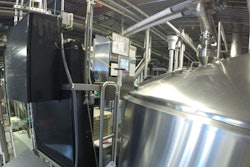
What would you do if someone handed you a very basic looking plug and said you could do anything with it? The answer is, you’d probably do nothing because you really don’t understand what it is or its potential. That was the experience of the developers at WeMo, a maker of “smart plugs” for the home that will control anything plugged into it, from lights to fans to washing machines to TVs, all of which are easy to access via a smartphone app.
The problem is, when WeMo began researching the Internet of Things (IoT) market and gave its smart plugs away as part of a promotional offer to fuel its market research, they stumped a lot of folks. Some individuals got very creative, like the guy who had an insect problem in his attic, and attached the smart plug to a vacuum cleaner, adding a motion sensor that would turn on the vacuum when the insects were present—thereby sucking up the little buggers. Another person programmed the plug to open and close the chicken coop door. But most folks just left it sitting on their desk, or, more likely, in the garbage pail.
This story from Peter Taylor, vice president of products at Belkin, WeMo’s parent company, has little to do with the Industrial Internet of Things (IIoT), but everything to do with the overarching attitude about all this smart stuff infiltrating our homes, offices and plant environments.
Taylor spoke at the IoT Summit in Boston last week, along with other suppliers from the networking, cloud and wearable markets. And, while the focus was slanted toward commercial applications for consumers, there were some coinciding themes with the industrial industries specifically around the interoperability of “things” and the culture shift that needs to happen.
Taylor noted that there is a huge learning curve associated with the variety of use cases, and, more importantly, what to do with the millions of data points that will be generated from smart home inhabitants.
That’s kind of what we’re grappling with in the industrial space, too. As I walked the floor at the International Manufacturing Technology Show (IMTS) this week, it was hard to walk past a booth that didn’t have some kind of IIoT reference attached to it. But whether it was a connected controller, a network gateway, or a predictive maintenance application, each product is just one part of what IIoT is—which is a network of intelligent systems, devices, and objects that collect and share massive amounts of data.
In my recent column The IIoT Integrators are Coming, I was trying to make the point that we are experiencing accelerated change as smart sensors, Ethernet, cloud computing, analytics and machine learning inundate everything we touch. This creates industry and end user confusion as people struggle to understand the capabilities these technologies can unlock in the plant, the enterprise and even the home.
The column was meant to be a call-to-action to industrial system integrators (SIs), as I believe these are the companies that could have the biggest impact in this area. But I questioned whether they were prepared.
I certainly didn’t mean to insinuate that all system integrators are unprepared for IIoT as pointed out by Jeff Miller in his column. Obviously, there are always trailblazers in the crowd, like Avid Solutions. But the spirited conversation surrounding this topic within the CSIA forum only reinforces (to me anyway) that IIoT is a disruptive dynamic in this group.
Whether it’s a CIO asking for insight into the supply chain, a manufacturing engineer considering where a sensor should be placed on a piece of equipment, or me wondering what to do with WeMo’s smart plug—we are all a little lost right now.
It is not the technology that is the stumbling block. That’s the easy part for SIs who deal with controllers, protocols and networks every day. It is the change in the business model that IIoT necessitates and the new service-oriented IT-based practices that OT minds will need to embrace that is the hurdle here.
Here’s the thing: There will be thousands of IoT/IIoT applications and systems coming in the future. Each product, be it hardware or software, will be built with a very specific purpose (turn on the light, capture the pump data, analyze at the edge, move essential information to the cloud), but someone needs to pull the pieces of the puzzle together.
Someone who understands the intricacies of plant floor protocols and topologies and who can jump the wall into the IT world to connect the infrastructure in a secure, reliable and scalable way. More importantly, put on your data scientist hats, because the ability to interpret the data generated for value-add will be the differentiating factor moving forward.
I like what Larry Asher of Bachelor Controls said in his latest column: “Considering how vast these [IIoT] solutions can be, with all of the possibilities, it is important for each of us to survey the landscape to determine where we want to be and what role we will play.”
Now is the time for all system integrators—often relegated to backup quarterback status—to step onto the field and into your role in the IIoT spotlight. You have the knowledge that the industry needs for these deployments to succeed. You have the ability to make a difference to your clients and influence the direction in which they move.
Whether it’s a CIO asking for insight into the supply chain, a manufacturing engineer considering where a sensor should be placed on a piece of equipment, or me wondering what to do with WeMo’s smart plug—we are all a little lost right now.
Lead the way my SI friends. We will follow.
















